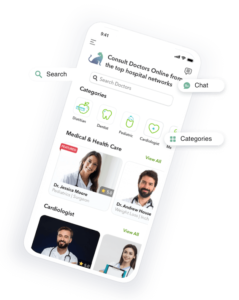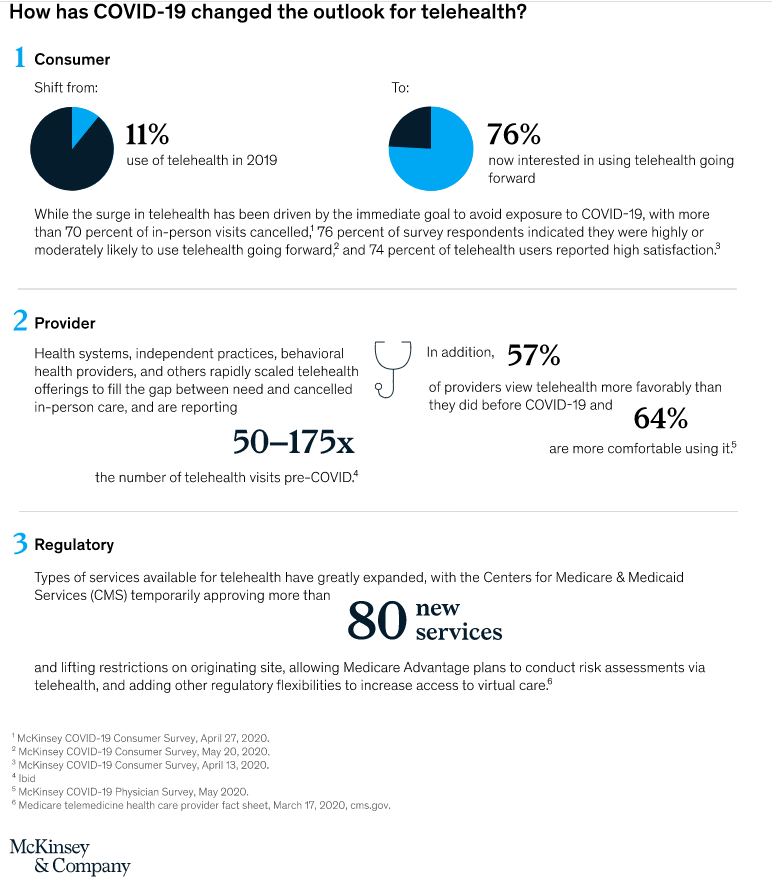Telemedicine had stayed away from mainstream implementation throughout the last century. In 2000, a patient used to travel to a hospital, see the list of available doctors on a board, select the doctor and then get the consultation. Numerous times patients had to reschedule the visit because the doctor couldn’t show up at the specified date and time. By 2020, the internet had solved this by making doctors’ availability accessible before the appointment. But the patient still had to travel to the hospital for offline consultation. Covid-19 changed all that. To reduce the risk of viral transmission to either patients or healthcare workers, elective and preventive visits were converted to telemedicine visits. Due to the lockdown and social distancing measures, people started refraining from going to clinics and healthcare organizations to consult doctors. This significantly increased the growth of telemedicine services.
What is Telemedicine Services?
Telemedicine services involve the use of electronic communications and software, powered by the internet, to provide clinical services to patients without an in-person visit. Telemedicine technology is frequently used for follow-up visits, medication management, specialist consultation, and other services that can be provided remotely via secure video and audio connections. In the last three to five years, the dynamics of the healthcare industry had changed due to a shift to direct-to-consumer telemedicine services. CoVID-19 acted as a shot in the arm for the telemedicine industry.
Telemedicine has a host of benefits for patients and providers alike.
The benefit of telemedicine services to Patients:
- Improved access to quality healthcare
- Reduced time wastage and travel expenses
- Reduced interference with household responsibilities
- Higher level of privacy
- Prevention from exposure to other potentially contagious patients
The benefit of telemedicine services to Healthcare Providers:
- Increased efficiency and revenue
- Easier onboarding of doctors and patients
- Improved patient follow-through
- Reduced missed appointments and cancellations
- Better protection against the threat of retail health clinics and online-only providers

CoVID led instantaneous growth in telemedicine
COVID-19 has pumped up the use of telemedicine. According to McKinsey COVID-19 Consumer Survey, consumer telemedicine adoption had skyrocketed, from 11 percent of US consumers in 2019 to 46 percent by April 2020. Up to $250 billion of current US healthcare spend could potentially be virtualized. According to another recent market intelligence study published by BIS Research, the global telemedicine market was estimated at $21.55 billion in 2019 and is expected to reach $123 billion by the end of 2030
Covid-19 has provided a new opportunity to revisit the cycle of patients’ clinical assessment, treatment, and monitoring. Telemedicine has emerged as a significant alternative for healthcare providers to improve care delivery, especially during a crisis. The technology holds the promise to solve some of the most significant problems related to global healthcare systems, such as access to care, cost-effective delivery, and distribution of limited providers. This pandemic has given the digital health community the opportunity to leverage big data analytics, artificial intelligence, remote learning, and data interconnectivity.

Potential of telemedicine services in a post CoVID world
Telemedicine will continue to play a major role in a hybrid model of care that emphasizes treating patients where and how they prefer — at home, on the go, or in person. With this shift, the industry will reduce costs, waste fewer resources, increase access to care, and improve patient outcomes in the post-Covid-19 world. The patient journey will start online and get directed to the optimal care setting either physically or virtually. Technology will empower improved outpatient care for patients and optimize doctor’s consulting time. On-demand pathology diagnostics and home healthcare services, coupled with e-pharmacies facilitating the delivery of medicines, will get a boost.
Telemedicine will increase access to necessary care in areas with shortages, such as behavioral health. Fundamentally, telemedicine would increase the convenience for patients to access care when they need it and the likelihood that they will take the right steps to manage their care. Telemedicine will improve healthcare access by enabling remote patients to obtain clinical services, including emergency and intensive care services. The technology will also help improve health outcomes by enabling patients to get the diagnosis and treatment for a condition at an early stage, thus saving clinical costs.
Note: In case you are looking for a Product Management course, I would highly recommend joining this cohort-based course – ISB Executive Education – Product Management program
PS: You can connect with me for review or referral discount (link for referral discount)


